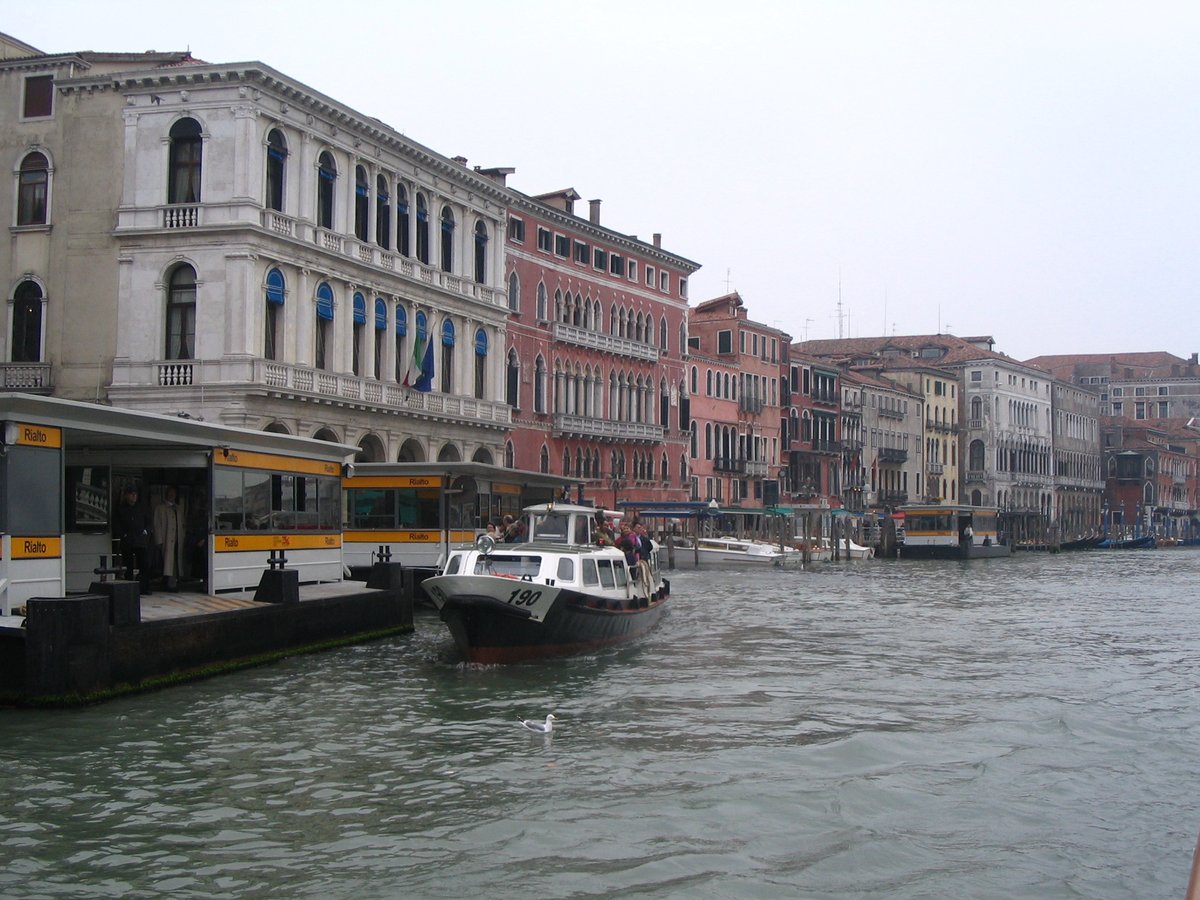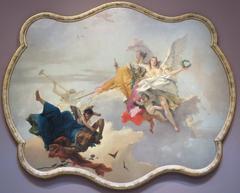
Palazzo Dolfin Manin, Venice: Visiting Hours, Tickets, and Comprehensive Travel Guide
Date: 14/06/2025
Introduction
Palazzo Dolfin Manin is an architectural masterpiece and a living chronicle of Venice’s political and artistic history. Overlooking the Grand Canal in the San Marco district, this Renaissance palace was designed by Jacopo Sansovino in the 16th century and later became the residence of Ludovico Manin, the last Doge of the Venetian Republic. Today, Palazzo Dolfin Manin serves as the Venetian headquarters of the Bank of Italy, opening its doors to the public during special events and guided tours. This guide provides an in-depth look at the palace’s historical significance, architectural features, artistic treasures, and all the practical information you need for a rewarding visit.
Table of Contents
- Introduction to Palazzo Dolfin Manin and Its Historical Significance
- Renaissance Origins and Construction
- Architectural Features and Innovations
- Artistic Heritage and Interior Highlights
- The Manin Family and the Fall of the Republic
- 19th–20th Century Transformations and Modern Use
- Visiting Information: Hours, Tickets, and Accessibility
- Nearby Attractions and Practical Tips
- FAQs: Planning Your Visit
- Conclusion and Travel Recommendations
- References and Further Reading
Introduction to Palazzo Dolfin Manin and Its Historical Significance
Palazzo Dolfin Manin embodies the grandeur and cultural dynamism of Venice’s Renaissance era. Commissioned by the noble Dolfin family and designed by Jacopo Sansovino between 1536 and 1547, the palace stands as a milestone in Venetian architecture, shifting from the medieval Gothic to the balanced elegance of Renaissance classicism (Italyscapes).
The palace’s historical resonance deepened when Ludovico Manin, the last Doge, made it his residence. His abdication in 1797 signaled the end of the Venetian Republic, forever linking the building to a pivotal chapter in European history (Veneto Inside; Venice Civic Museums).
Renaissance Origins and Construction
Commissioning and Design
The Dolfin family, prominent Venetian patricians, initiated the transformation of their medieval property in 1536, commissioning Jacopo Sansovino—an architect deeply influential in the city’s urban renewal. Sansovino’s plan integrated two earlier buildings, resulting in a distinctive trapezoidal layout with a square internal courtyard (Wikipedia; Italyscapes).
Construction Details
Built over a decade at a cost of roughly 30,000 ducats, the palace showcased the Dolfin family’s wealth and their embrace of the Renaissance ideals of order, symmetry, and classical harmony. Its location on the Grand Canal, near the Rialto Bridge, ensured both prestige and visibility (ermakvagus.com).
Architectural Features and Innovations
Façade and External Design
Sansovino’s façade is renowned for its mathematical precision and harmonious proportions. Constructed from luminous white Istrian stone, the ground floor features a portico of six arches supported by Doric pilasters, once housing commercial spaces and maintaining open public access—a unique aspect in Venice (Italyscapes). The two upper “piani nobili” are articulated with Ionic and Corinthian pilasters, and a central quadrifora on each level adds rhythm and elegance.
Interior Layout
The palace’s layout follows the Venetian tradition, with a central portego (hall) flanked by suites of rooms. The grand staircase leads to the piano nobile, home to the main reception rooms. The spatial organization maximizes light, ventilation, and ceremonial grandeur (Banca d’Italia).
Innovations
Sansovino’s design introduced a new standard for urban palaces, blending residential and commercial functions and setting a precedent for later architects like Palladio (Great Buildings).
Artistic Heritage and Interior Highlights
Tiepolo Frescoes and Decorative Arts
The palace’s artistic zenith arrived in the 18th century when Ludovico Manin commissioned Giovanni Battista Tiepolo to create ceiling frescoes celebrating his marriage to Elisabetta Grimani. Tiepolo’s works, although some lost, remain celebrated for their allegorical and mythological richness (venice.jc-r.net; Veneto Inside).
Neoclassical Renovations
During the later 18th century, Giannantonio Selva was engaged to modernize the interiors. Selva removed the courtyard shops, installed a new neoclassical staircase, and oversaw new stucco and ceiling paintings by artists such as Pierantonio Novelli and Jacopo Guarana, harmonizing the Renaissance structure with neoclassical tastes (ermakvagus.com).
The Manin Library
The Manin family’s library grew to be one of Venice’s finest, enriched by the Basadonna collection in 1810. Though much was later dispersed, it symbolized the family’s intellectual and cultural influence (venice.jc-r.net).
The Manin Family and the Fall of the Republic
The palace gained lasting historical significance as the home of Ludovico Manin, the last Doge. His acceptance of Napoleon’s terms in 1797 ended the Republic of Venice. After his abdication, Manin lived in seclusion within the palace, which underwent further neoclassical renovations during this period (Wikipedia).
19th–20th Century Transformations and Modern Use
Following Ludovico Manin’s death, the palace remained with the family until 1867, when it was sold to the Banca Nazionale del Regno (later the Bank of Italy). The late 19th century saw urban changes, including the widening of nearby streets. Restoration campaigns in the 20th century have preserved the building’s architectural and artistic integrity, allowing it to serve both as an institutional center and a cultural landmark (Italyscapes; Banca d’Italia).
Visiting Information: Hours, Tickets, and Accessibility
Visiting Hours
Palazzo Dolfin Manin is typically open for public visits during special cultural events, such as Giornate FAI di Primavera, and occasional guided tours. Standard visiting hours for these events are usually 10:00 AM–5:00 PM, Tuesday to Sunday. Always confirm current opening times and event schedules on official platforms before your visit (Venice Tourism; Venice Civic Museums).
Tickets and Booking
Admission is often free during public open days, but advance booking is usually required for guided tours and special events. Ticketing details and reservations can be found on the Venice Civic Museums website or the Banca d’Italia’s official site.
Accessibility
The palace offers partial accessibility to visitors with reduced mobility. Due to its historic structure, some areas may remain challenging. Contact the venue or event organizers in advance for specific accommodations.
Directions
Palazzo Dolfin Manin is located at Riva del Carbon, 4795, San Marco district, a short walk from the Rialto Bridge and easily accessible by vaporetto (water bus) lines to Rialto or San Marco.
Nearby Attractions and Practical Tips
- Nearby Landmarks: Rialto Bridge, Mercato di Rialto, Church of San Bartolomeo, Palazzo Bembo, and St. Mark’s Basilica are all within walking distance.
- Best Photo Opportunities: Capture the palace’s façade from the Grand Canal or Riva del Carbon, ideally during the golden hours of morning or late afternoon.
- Recommended Attire: Comfortable shoes are advised for navigating Venice’s cobbled streets and bridges.
- Additional Experiences: Combine your visit with a guided walking tour or boat excursion to fully appreciate the surrounding historical context.
FAQs: Planning Your Visit
Q: What are the typical visiting hours?
A: The palace is open during special events, usually 10:00 AM to 5:00 PM, Tuesday to Sunday. Always check official sources for current schedules.
Q: Is there an admission fee?
A: Entry is often free during public open days; guided tours may require advance booking or tickets.
Q: Is Palazzo Dolfin Manin wheelchair accessible?
A: Partial accessibility is available; contact the venue in advance for details.
Q: Where is the palace located?
A: Near the Rialto Bridge, in the San Marco district, directly on the Grand Canal.
Q: Are guided tours available?
A: Yes, during special events and by reservation. Tours are often offered in multiple languages.
Conclusion and Travel Recommendations
Palazzo Dolfin Manin represents the intersection of Venice’s architectural innovation, artistic excellence, and historical transformation. Its Renaissance design by Sansovino, association with the last Doge, and preserved artistic interiors make it a highlight for history and architecture enthusiasts. While daily public access is limited due to its current function as the Bank of Italy’s headquarters, guided tours and open days offer rare opportunities to explore its treasures.
Plan your visit by consulting official tourism and cultural platforms for up-to-date information on openings and ticket availability. Enhance your experience with an audio guide, and take the time to explore the palace’s vibrant neighborhood, rich with other Venetian landmarks.
References and Further Reading
- Palazzo Dolfin Manin, Wikipedia, 2025
- Palazzo Dolfin Manin, Italyscapes, 2025
- Palazzo Dolfin Manin, Venice.jc-r.net, 2025
- Palazzo Dolfin Manin, Venice The Future, 2025
- Palazzo Dolfin Manin, Veneto Inside, 2025
- Palazzo Dolfin Manin, Venice Civic Museums, 2025
- Palazzo Dolfin Manin, Banca d’Italia, 2025
- Palazzo Dolfin Manin, Venice Tourism, 2025
- Palazzo Dolfin Manin, Ermakvagus, 2025
Call to Action
For expert audio guides, insider tips, and up-to-date information on Palazzo Dolfin Manin and other Venetian historical sites, download the Audiala app. Stay connected with Venice’s cultural heritage by subscribing to our newsletter and following us on social media for the latest events, guided tours, and travel insights.













































































































